What is Semiconductor Load Board PCB Testing?
![]()
A semiconductor load board printed circuit board (PCB) is used during the manufacturing of integrated circuit (IC) units. The semiconductor load board PCB is used for testing packaged ICs.
The load board consists of a PCB containing the test sockets. The circuit board is mounted on the test head. The semiconductor load board construction must be without defects as it will affect the results of the IC units.
Semiconductor Load Board PCB Testing: An Overview
A semiconductor load board PCB is the contact interface between the pins of the unit being tested and the semiconductor test equipment.
The load board is used to verify that the component that is being tested does not have any defect. The tester must evaluate whether the testing board accurately captures defects in tested components.
Semiconductor load board PCBs must be checked before their production test. The capability of the semiconductor load board PCB must be verified before the production test run on the floor. The testing of the equipment must be done periodically to ensure that it can detect life-cycle failures in the circuit board.
Characteristics of Semiconductor Load Board PCB Testing
The semiconductor load board PCB testing method allows complete and fixtureless testing of load boards. Most professional semiconductor load board PCB testing involves the testing of large load boards. The testing method carried out by professional Semiconductor load board PCB testers can help in the recognition of defects in the process.
The semiconductor load board PCB evaluation method allows for determining issues such as short circuits and open pins. Professional technicians that carry out semiconductor load board PCB tests can find out about weak components. The semiconductor load board PCB evaluation method can help with issues in parts such as relays.
With professional semiconductor load board PCB evaluation, technicians can know about the issues with the IC board within a few hours. The semiconductor load board PCB testing does not involve application-specific tools.
![]()
When Semiconductor Load Board PCB Test Equipment Is Used?
Semiconductor load board PCBs are designed to test the device under a test plan. There must be minimum distortions for accurate analysis of the device's performance. Moreover, the load board PCB must be flexible so that future test needs can be easily handled.
Meeting the load board test equipment goals often requires some tradeoffs. An example of how testing is done, and the tradeoffs made is as follows.
Let’s suppose that the semiconductor load board PCB test plan is to drive a clock to the IC device under test (DUT). You must first route a tester clock source to the clock pin of the DUT. The clock pin of the DUT must be connected to a socket on the semiconductor load board PCB.
To minimize the distortions, you must keep the length of the clock connected to the DUT as short as possible. The clock pin should not be hardwired to the clock source as it will prevent you to make advanced testing with a higher-performance clock.
A trade-off in achieving the goal of the flexibility of the semiconductor load board PCB is that you have to compromise a degree of accuracy. The required cabling and connector may degrade the signals of the clock to a degree that must be accounted for when using the semiconductor load board PCB.
Benefits of Semiconductor Load Board PCB Testing
With the increasing complexity of the semiconductor designs, verifying the integrity of the ICs has become difficult. Semiconductor load board PCB testing allows manufacturers to test IC units that contain billions of circuits in a tiny area.
With the help of semiconductor load board PCB testing, manufacturers can more accurately verify the performance of complex IC designs. Here are some of the benefits of using a semiconductor load board PCB for manufacturers of IC devices.
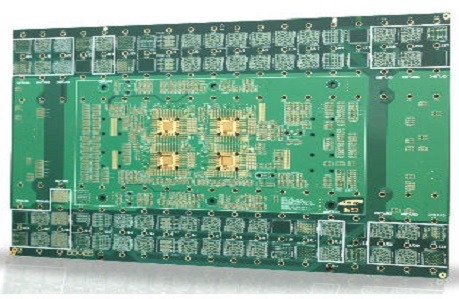
Save Time in Testing for Continuity
Verifying the continuity of the load board performance using the semiconductor load board PCB testing will help save cost and time.
The actual cost of verifying the IC performance through standard testing equipment can cost thousands of dollars each year. Companies have to bear the cost of periodic performance tests to measure IC performance over the life cycle.
Using semiconductor load board PCB testing can greatly slash the cost and time of verification of circuit boards as compared to verification using million-dollar standard testing devices.
Verification of Varying Load Board Performance
A dedicated semiconductor load board PCB can be used for verifying the performance of load board configurations with varying measurement capabilities.
The semiconductor load board PCB serves as a mechanical and electrical connector between the testing equipment and the IC. With the use of the semiconductor load board PCB, manufacturers can make a reliable verification of the integrity and performance of the integrated circuits.
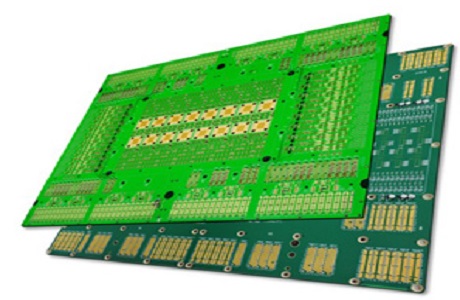
Accurate Verification of Data
The semiconductor load board PCB will make it possible for accurate testing of measurement data. Evaluating performance using the ohmmeter for short or opens between the contacts may be less costly. But the manual measurement does not result in an accurate evaluation of the IC performance.
The manual method is not practical for modern ICs with hundreds and thousands of pins. The semiconductor load board PCB testing will result in accurate performance testing for advanced IC designs.
Advanced Performance Measurement
Semiconductor load board PCB offers an advantage over standard ATE testing in terms of improved testing of resistance and leakage. The testing method involves verification of the IC units to ensure that there are no shorts or opens in the internal circuit.
Manufacturers can know about current leakage and circuit resistance using the semiconductor load board PCB. With the use of the manufacturers can know about the capacitance of the units and evaluate them as per the standards.
Current resistance is generally tested between the range of 1mW to up to 100 MW. The semiconductor load board PCB testing at 0.1 percent accuracy.
Using the semiconductor load board PCB, manufacturers can also know about the resistance of the unit in the range of 10 nA up to 100 µA at 1 percent accuracy. Moreover, the capacitance of the unit can be tested over the range of 10 pF to 10 mF at 5 percent accuracy.
Load board resistance in general is less than 100 mW and the leakage is less than 100 nA. The capacitance value depends on the values and the number of capacitors on the board. The cost of verifying the integrity of the test ranges between $350 to $500 per hour.
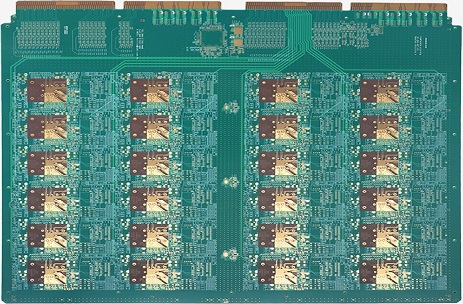
Complex System Testing
The semiconductor load board PCB method also involves verification of the performance of diodes. The testing is carried out of Zener diodes, Rectifier diodes, and Transorbs. Moreover, system testing can be carried out for user-specified relay armature voltages and high-voltage parts of up to 35V incorporated into the IC circuitry.
With the semiconductor load board PCB evaluation, manufacturers can know about the propagation and impedance delays. The testing is carried out through a time-domain reflector during the board design process.
Flexible Board Testing
Semiconductor load board PCB testing makes it possible to remain flexible in testing IC integrity and reliability. Manufacturers can evaluate test heads through the emulation of varying heads. The method allows cost-effective performance verification of the circuits. It allows testing the IC integrity of varying ATE models.
The versatility and ease of testing help in saving time and cost of measuring the integrity of the circuits. It is more versatile and cost-effective than using a dedicated test system located at the facility of manufacturer.
Manufacturers can hire firms that offer semiconductor load boards PCB to check the integrity of manufactured circuits without having to invest in costly systems.
Varying Testing Options
Flexibility in testing the equipment is made possible with the semiconductor load board PCB testing. It involves point-to-point resistance testing between the different contact points on the PCB. The method allows proper verification of the socket to PCB termination.
A method used in semiconductor load board PCB testing is placing a shorted device in the socket for checking the continuity through a test to check the resistance of the parallel return path. A custom device emulator can be used to check the integrity through a daisy chain resistance method.
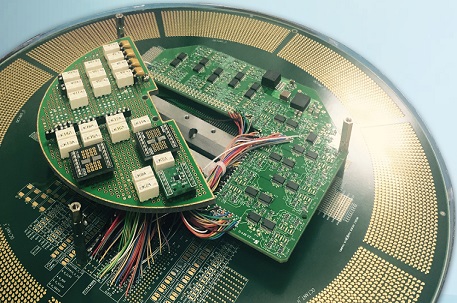
Evaluation Straight Out of Assembly
Semiconductor load board PCB makes it possible to test fresh boards right after assembly. The Semiconductor load board PCB evaluation carried out by professional technicians allows accurate diagnostics and precise probing.
An important method involved in the semiconductor load board PCB method is testing the spring contractors used in the sockets. The testing involves the use of a contact resistance fixture to evaluate the SMT interfaces before they are attached to the load board.
Semiconductor load board PCB allows for measuring the integrity of circuit boards. Technicians that carry out advanced semiconductor load board PCB testing can provide value in the manufacturing process. The semiconductor load board PCB evaluation allows the detection of defective load boards. Through semiconductor load board PCB, manufacturers can test the integrity of the components after assembly.
Manufacturers can test fresh load with semiconductor load board PCB. Weak components can be identified with the semiconductor load board PCB evaluation method.
Critical Test Parameters
The contact resistance fixture allows the identity and replacement of defective spring contractors. Semiconductor load board PCB testing makes it possible for firms to check the integrity of systems with an integrated system of hardware and software used for load verification and testing.
Advanced semiconductor load board PCB testing makes it possible to know about the range, type, and tolerance of DUTs to evaluate critical parameters. The Semiconductor load board PCB evaluation can be customized to ensure more accurate measurement.
Semiconductor load board PCB testing also makes it possible to jump from one test to another without losing the accuracy of measurement. The semiconductor load board PCB testing is carried out with the aim of quick and easy conversion from one emulation to another.
Semiconductor load board PCB testing accounts for feature capacitance, leakage, and resistance that can result in wrong measurements. Advanced semiconductor load board PCB evaluation involves a focus on the accuracy of measurement to ensure conformance with critical success parameters.
Baseline Measurement with Semiconductor Load board PCB Testing
Semiconductor load board PCB evaluation involves the collection of different measurement data to compile historical test data. The application of semiconductor load board PCB testing allows creating a baseline measurement allows more accurate measurement of data relating to the evaluation of the IC performance integrity.
Manufacturers can use the data from semiconductor load board PCB testing to create a benchmark against which future performance evaluation can be carried out. The semiconductor load board PCB evaluation involves the use of test measurements for determining operational trends and maintenance schedules.
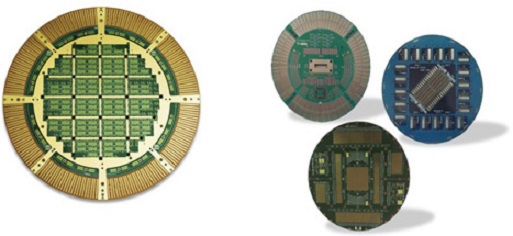
Cons of Semiconductor load board PCB Testing
Semiconductor load board PCB testing provides a lot of benefits for manufacturers. But the semiconductor load board PCB method also has certain cons that you need to know.
Semiconductor load board PCB testing often involves specific diagnostic procedures. The diagnostic procedure in Semiconductor load board PCB testing costs between $350 to $500. While the cost of hiring semiconductor load board PCB evaluation services is high, the cost is much lower than purchasing and maintaining ATE equipment for testing purposes.
Semiconductor load board PCB involves a lengthy diagnostic process. The limited function test involved in semiconductor load board PCB evaluation may not be enough to know about all possible issues with the load board. The semiconductor load board PCB testing must be done thoroughly to ensure a complete evaluation of the integrated circuits.
Another con of semiconductor load board PCB testing is that the test does not output an exact error message. As a result, the semiconductor load board PCB method does not provide information on what parts should be replaced. The test engineer must carry out advanced testing to know about the defective IC.
You must know that semiconductor load board PCB will not provide information about hidden defects. Certain issues that do not directly affect the performance may not be detected by the semiconductor load board PCB method. A deeper analysis is required to find out issues with the board that creates stability issues.
Final Words
Semiconductor load board PCB testing does not require investment in advanced hardware and software. Experienced technicians can carry out semiconductor load board PCB testing to generate the results in a short time. The semiconductor load board PCB is carried out using CAD data extracted from the load board.
All the procedures involved in semiconductor load board PCB testing can be carried out in a single day. The system involved in semiconductor load board PCB evaluation can help in identifying issues and defects. The semiconductor load board PCB test serves as a starting point for more advanced testing.
Manufacturing firms can outsource semiconductor load board PCB evaluation to save costs. There is no need to invest in costly assembly for testing IC units. Semiconductor load board PCB allows accurate diagnosis of the IC chips.
Semiconductor load board PCB testing can allow evaluation of the integrity of complex IC devices. If you are looking for a reliable semiconductor test system, you should contact Hemeixin PCB.
Hemeixin PCB provides advanced semiconductor test solutions for manufacturers. We provide a versatile package for testing semiconductors that save cost for manufacturers. You can visit our website to know more about our services for valued clients.




